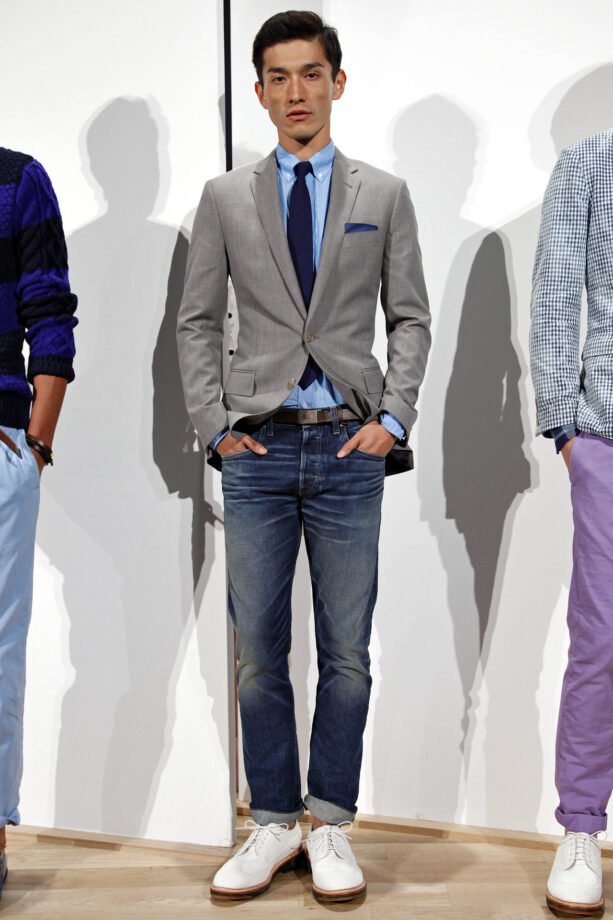What is business casual attire

Business casual attire has become the norm in workplaces across the world. But with its increasing prevalence, it can take time to define precisely what constitutes business casual and what does not. After all, it’s not always easy to know when you’re straying from the dress code. This blog post will go through everything you need about business casual attire, from the basics of what to wear to tips on ensuring you look put together and professional, even when dressing casually for work. We’ll also provide some advice on how to navigate tricky situations where the dress code isn’t clear. Read on for more!
The definition of business casual attire
When it comes to business casual attire, there is no one definitive answer. While “business casual” is often used interchangeably with “professional dress,” there is a distinct difference between the two. Business casual dress code is typically more relaxed than traditional professional dress code, though still maintaining a level of formality.
The key to nailing the perfect business casual look is to strike a balance between too formal and too casual. A good rule of thumb is to consider what you would wear to a nice restaurant on a date night. You want to look polished and put-together, but not overdressed or stuffy.

Some everyday items included in a business casual wardrobe are slacks, khakis, collared shirts, button-down shirts, sun dresses, skirts (at or below the knee), blouses, and sweaters. Jeans are generally considered too casual for most business settings, however some workplaces may allow for denim on Fridays or in more relaxed environments. It’s always best to err on the side of caution and assume jeans are not allowed unless expressly stated otherwise.
When it comes to footwear, closed-toe shoes are always best. Sandals and open-toe shoes are generally not appropriate for most business settings. Again, if you’re unsure, it’s always best to err on the side of caution and go with closed-toe shoes.
As far as accessories go
What clothing items are considered business casual
There is no definitive answer to this question, as it depends on the specific workplace and dress code. However, in general, business casual attire tends to be more conservative than casual wear, but not as formal as traditional business wear. It typically includes khaki or dark-colored trousers/skirt, a button-down shirt, blouse, polo shirt, or sweater, and closed-toe shoes.
How to put together a business casual outfit
Assuming you have the necessary clothing items for a business casual outfit, putting the outfit together is easy. The first step is to choose lower-cut clothing items. A button-down shirt or blouse, dress slacks, and skirts are all appropriate choices. You will want to stay away from anything too tight or too short. Next, add some layers. A sweater or cardigan can add warmth and style to your outfit. Finally, finish off the look with appropriate shoes and accessories. Loafers, dress flats, and pumps are all excellent choices for footwear. And remember the jewelry! A simple necklace or earrings can really complete your ensemble.
The benefits of dressing in business casual attire
There are many benefits to dressing in business casual attire. For one, it allows you to dress more comfortably than you would in traditional business attire. This can help you feel more relaxed and confident in your appearance, which can be beneficial in both work and social settings.

Additionally, business casual attire is often more affordable than traditional business attire. This can be an excellent option for those who want to save money on their wardrobe or for those who prefer not to invest in expensive clothing.
Finally, business casual attire is more versatile than traditional business attire. This means that you can wear it for a variety of occasions, both formal and informal. Whether you’re headed to the office or meeting friends for drinks after work, dressing in business casual can help you feel appropriate and stylish no matter where you’re going.
The drawbacks of business casual attire
There are a few drawbacks to business casual attire:
- It can be difficult to find clothing that is both comfortable and professional looking.
- Business casual attire is often less formal than traditional business attire, which can make it difficult to impress clients or customers.
- Business casual attire is only sometimes appropriate for certain events or meetings.
When to wear business casual attire
There is no definitive answer for when business casual attire is appropriate. It really depends on the workplace and the specific dress code of the company. In general, though, business casual attire is more relaxed than traditional business wear. It might include khakis, a blazer, a dress shirt, or even jeans in some cases. If you’re unsure what to wear, it’s always best to err on caution and dress more formally.
Conclusion
Business casual attire is an intermediate level of dress code that emphasizes comfort and professionalism. It’s a great way to look professional while still expressing your personality in the workplace. With these tips, you now know what items should be included in your business casual wardrobe so you can make sure you always look dressed for success!


